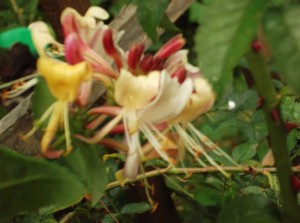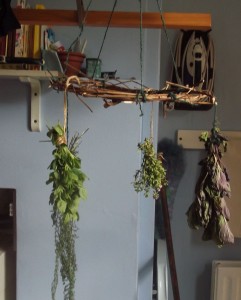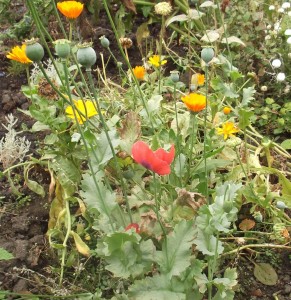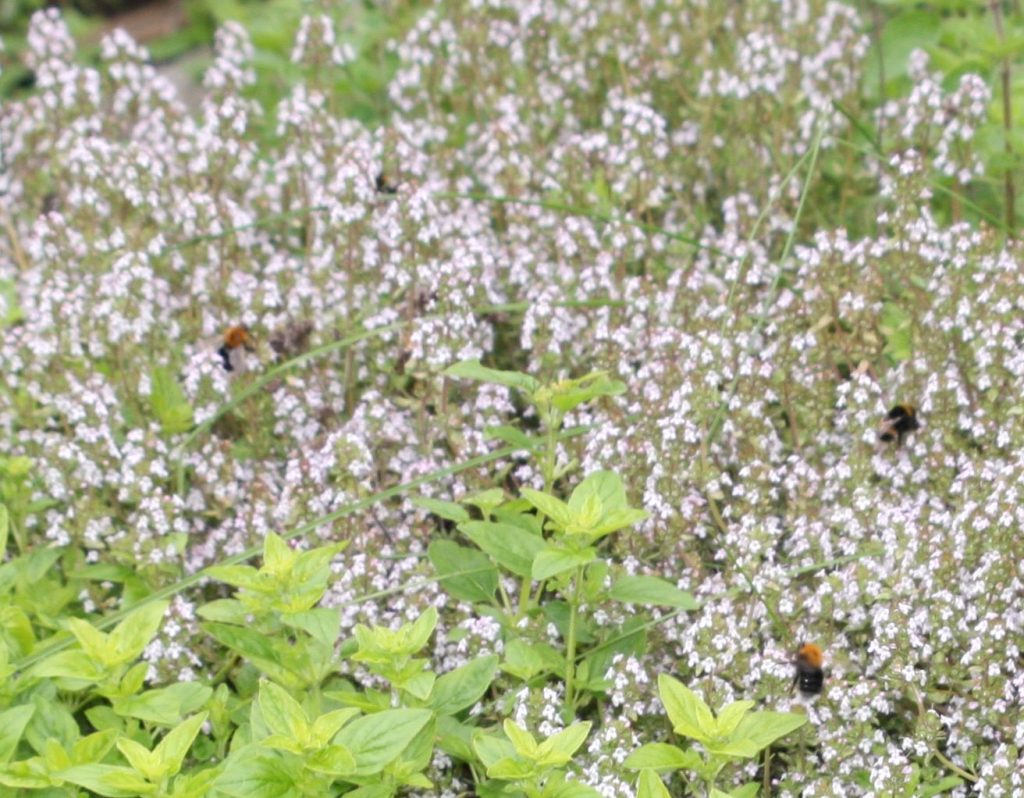
There are about five bees here, all enjoying yesterdays sunshine. There are three carder bees and two white-tailed bumble bees.

I’m think this is a hairy-footed flower bee.
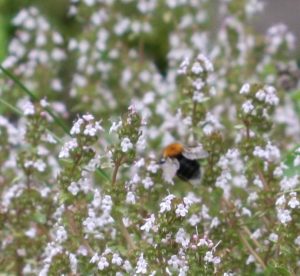
I suspect there may be miner bees here too. We used to have them in our walls a few years ago, and they were quite disconcerting as they headed for the cracks round the windows. They were surprisingly noisy too. They aren’t nesting there now, but we have plenty of other places for them to hide.
We have done very well for bees for the last few years, and exceptionally well this year. I was telling myself that thirty-seven years of organic gardening had paid off, but I caught a glimpse of a deer on the river bank and an awful thought occurred to me. The deer are coming closer because they are running out of wilder places to be. What if the bees are here, not because our garden is quite friendly, but because everywhere else is so barren?
I’m not giving in to this thought, however. Plenty of people in the village and more across the river, are planting bee friendly plants (there’s a new wildflower meadow germinating in one previously well-manicured lawn) and feeding birds. There’s someone nearby who rears thousands of peacock butterflies and releases them each year. The farmer has planted trees along the edges of the road, and the council are much less fanatical about mowing the verges, so we have had a lot of cow parsley this year.

The biggest change is the birds. Twenty years ago you could walk along the road into the village past the fields and hear nothing but the occasional jackdaw, or sometimes skylarks. Then you would come into the village and it was like turning the radio on, as birds were in every garden. Now we have plenty of skylarks – I’m promising myself to go out and record their songs one evening when the rain stops – more swallows than ever zipping across the road in front of you, and a lot of these:

They are everywhere. It’s not all good news. We don’t see half the curlews flying over that we used to, and there are no lapwings at all. But good things are happening – not enough, I admit, and there are many setbacks – but there is enough good to encourage us, enough of a nucleus to build on. The sound of bees in my garden is like a spring of hope.

